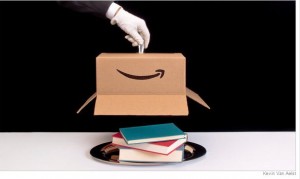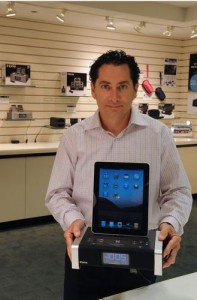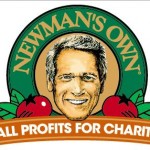Credit cards, in their current form, won’t exist in 10 years. “How” we pay for things won’t resemble how we pay for them today.
But I am going to work my way up to that point.
I was reading this article in the paper last weekend by Susan Saulny about the fact that lighthouses have become nothing more than ornamental tourist attractions.
It reminded me of an old (probably untrue) story about an overbearing Navy commander ordering someone in its path to change course or face getting run over. Back and forth they went over the radio, “you change course!” “No, YOU change course” back and forth and then the final remark in the conversation was “this is a light house, your call.”
These days, with GPS and real time weather reporting, vessels don’t need the light of the lighthouse, they don’t need the fog horn, and they don’t need the nautical flags indicating wind conditions. They are so outdated now, it borders on funny.
That got me to thinking about some of the things that didn’t even exist when I was little (I am 44):
Fax
Overnight mail (FedEx)
Voice mail (telephone answering machines)
ATM
Home video (Betamax, to VCR, to DVD, and now streaming)
The list goes on and on, but the way we pay for things has also changed quite a bit. Do you remember traveller’s checks and the old Karl Malden TV ads “Don’t leave home without them!” Well credit cards were still a pretty new thing when I was little, and it was a pretty big deal to get one, especially an American Express card.
Today I get 3-5 letters a week asking me to sign up for this credit card and that credit card. What that says about banks and consumer behavior is a topic for another day.
But I got to thinking, carrying around a physical piece of plastic with a little magnetic strip and poor excuse for a signature on the back is a pretty poor form of security and in the world of Purell Nation, having all of those other hands on our card, think of all of the germs on those cards . . . it’s almost as bad as the phones they supposedly never clean in hotel rooms (one more reason to love Skype).
So what’s the solution?What’s the future of payments?
Our mobile devices will be the “credit card” of the future. You would “beam” some information to the merchant about yourself (it could even be your Paypal account – which, at a restaurant you could include in your OpenTable reservation and skip the “beam” step) they then transmit to you the amount you owe, you click some sort of “agree to pay” button and that’s it. It would also ask you if you want to pay a gratuity, which you could also have pre-programmed to calculate percentages so you don’t have to do that math in your head after a glass of wine. It’s easy to password protect cell phones, so if you lose it you aren’t going to get hijacked by whoever finds it. The way things are going, we will be having mobile devices with us for a long, long time, and I really think it will happen swiftly that the credit card will become even less useful than a lighthouse.
-Ric
P.S. I would be very surprised if there aren’t already a handful of companies in Silicon Valley who have already figured this out.
 Amazon Prime’s fee is a little bit like paying for an upgrade on a flight when you don’t have enough miles or awards to do it for free. If you buy enough from amazon, you get free two day shipping for everything you buy, which is GREAT. If you don’t have enough purchases, they will charge you for the service. In my case, I rarely care whether the products arrive in two days or ten days, so I would never pay for Prime. It would be one thing if I were buying perishable goods or if I were a last minute gift shopper or something like that, but I would never pay to be a Prime customer. Having said that, it makes sense to me that Amazon charges people for this if they don’t “earn” it, but there is an actual cost to shipping, and I wonder how they calculate how much to charge? They must crunch the numbers to look at the total actual cost and then divide that by some number of customers that don’t earn it. You could also do it based on the number of packages, but because of the wide range of quantities purchased by customers, that’s probably not as good a metric. Anyway . . . I would be curious to know where the number comes from.
Amazon Prime’s fee is a little bit like paying for an upgrade on a flight when you don’t have enough miles or awards to do it for free. If you buy enough from amazon, you get free two day shipping for everything you buy, which is GREAT. If you don’t have enough purchases, they will charge you for the service. In my case, I rarely care whether the products arrive in two days or ten days, so I would never pay for Prime. It would be one thing if I were buying perishable goods or if I were a last minute gift shopper or something like that, but I would never pay to be a Prime customer. Having said that, it makes sense to me that Amazon charges people for this if they don’t “earn” it, but there is an actual cost to shipping, and I wonder how they calculate how much to charge? They must crunch the numbers to look at the total actual cost and then divide that by some number of customers that don’t earn it. You could also do it based on the number of packages, but because of the wide range of quantities purchased by customers, that’s probably not as good a metric. Anyway . . . I would be curious to know where the number comes from. The story of SDI Technologies, formerly Realtone electronics, is a great story, and it’s well told in
The story of SDI Technologies, formerly Realtone electronics, is a great story, and it’s well told in  For the same reason Newman’s Own wasn’t primarily successful because it gives 100% of its profits to charity. It was successful because it is a really good line of products and Paul Newman is a great brand. The charity is nice, but that’s not the number one reason they are a big success.
For the same reason Newman’s Own wasn’t primarily successful because it gives 100% of its profits to charity. It was successful because it is a really good line of products and Paul Newman is a great brand. The charity is nice, but that’s not the number one reason they are a big success.